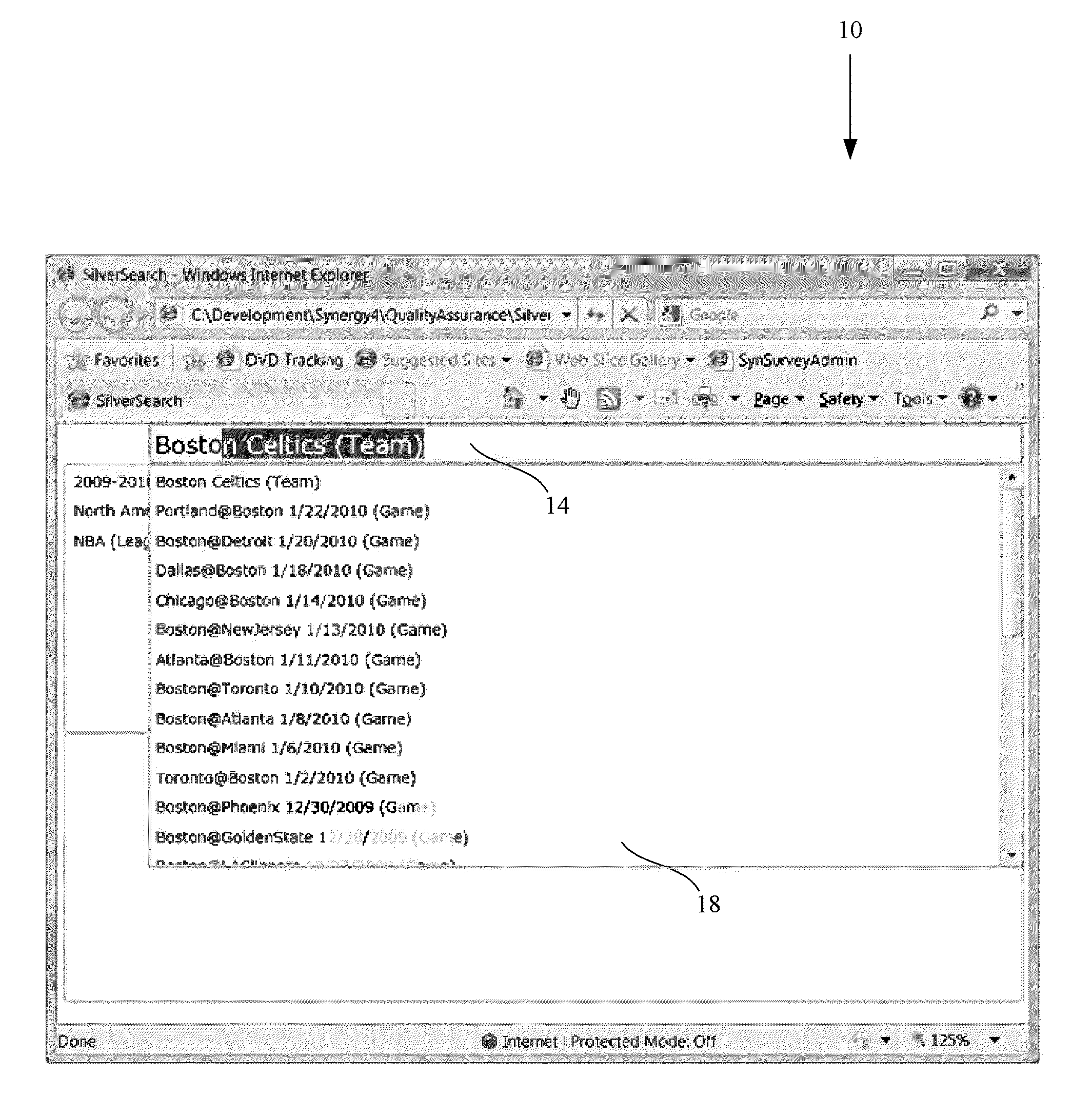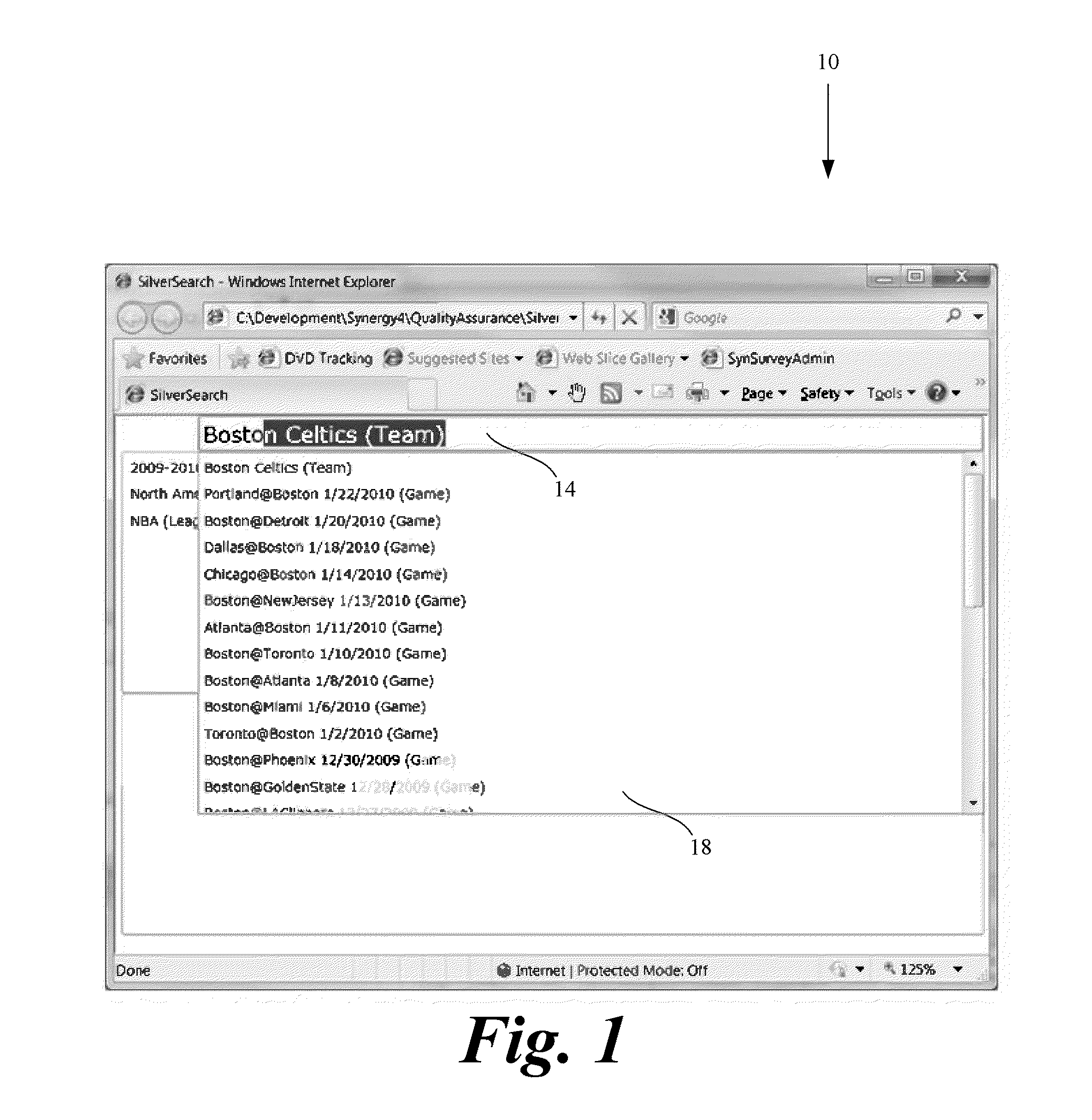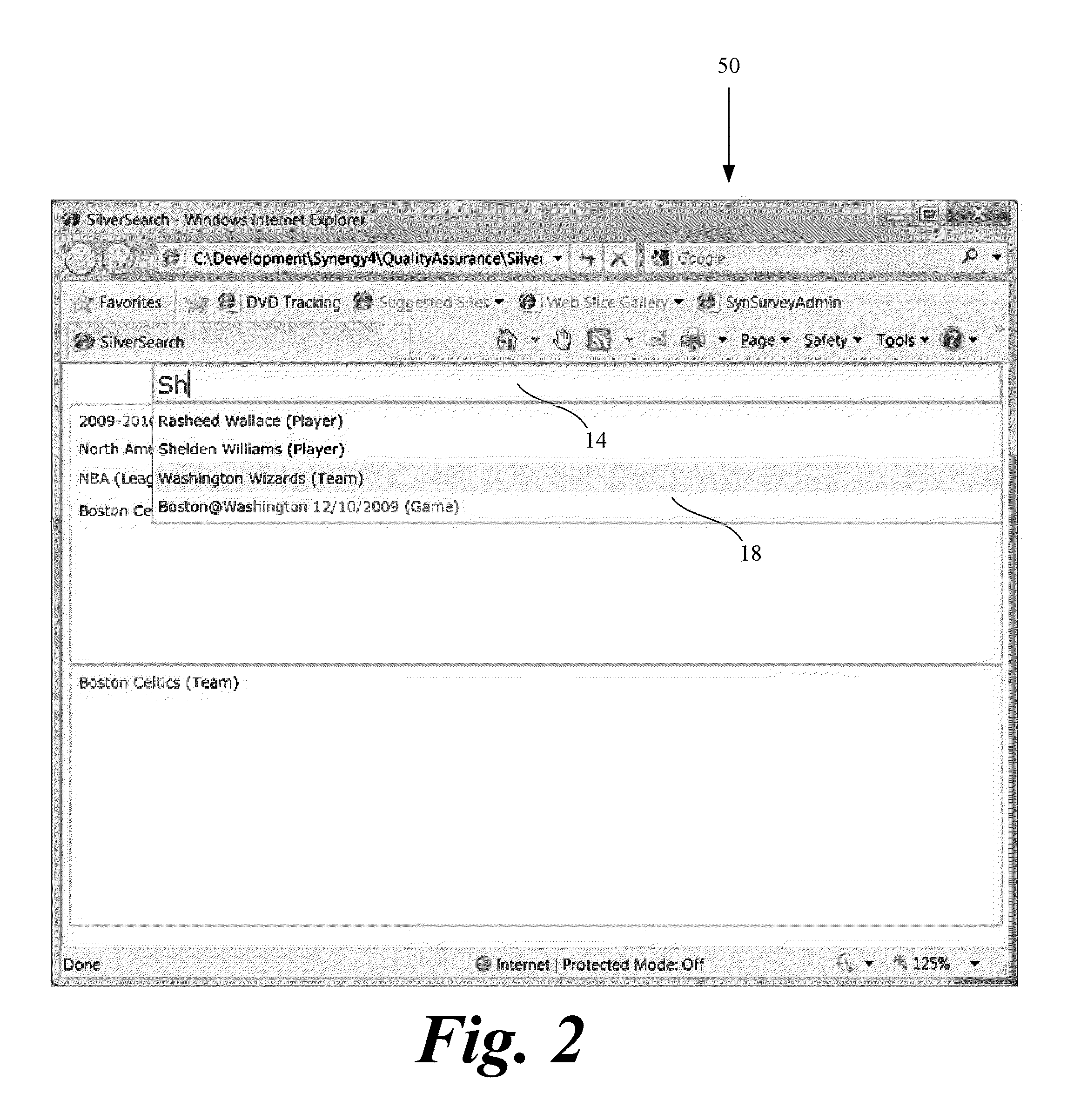[0014]Embodiments for displaying ontology-based data structures provide for systems and methods that correlates the available data from the search results via ontology-directed search relationships. This correlation makes browser-based viewing more efficient to the user in getting the desired results faster and with improved accuracy.
[0015]The embodiments provide for searching and displaying ontology-based data structures so that the essential and relevant qualities of searched subject matters may be categorized by subject indices. The
system and methods described below utilizing the ontology-based data systems enable a more integrated and tighter search experience while at the same time providing a natural search experience (similar to the search experience users have come to expect from search engines such as Google® for static searches on less
time sensitive and dynamic topics). There are no search methods available, beyond website links and each website's distinct navigational systems, to conveniently and quickly allow users to “follow their
nose” or to intuitively locate dynamic statistics based on a large set of available criteria.
[0016]In accordance with the particular embodiments herein, there is provided a set of data arranged with tight relationships between various subset data groupings. Additionally, there is a well-defined ontology structure which maps such data to correspond with real world situations. The attached examples address basketball, but the invention is not limited to a single sport or even to sports alone. Other topics can benefit from the invention. The process adds substantial value to users via organization of, and
ease of access to, the data. The invention provides a relational
data system which correlates all available data via ontology-directed available search relationships and connects results to a set of generalized statistical data views with applicable stats for the user's specific investigation which may also contain
contextual information such as links to applicable video edits.
[0017]The particular embodiments provide for that when searching for information relating to the National Basketball Association, the
client is presented with a Google®-style
search box. Users type in highest-
level data, such as a team name, a player name or a specific game. The system provides type-ahead options from which to select, and once selected, the selection forms the primary search basis and is displayed on screen as such. Once the initial selection is made, the user is subsequently presented with the system's next available search criteria options based on the initially set criterion. After selecting the second search criterion, that criterion is added to the on-screen search criteria
list and the user can then select a third option from yet another
list of selections. That element is also added to the on-screen search criteria
list and another set of relevant options based on prior selections may appear if more potentially useful relationships are defined within the system's ontology. By presenting the relationships making up the
query string, the user can easily navigate though a set of relevant data views to obtain desired results and can also click on any linkable items within the
data view (such as “assists” in order to see matching video streamed to their computer).
[0018]Furthermore, the particular embodiments provides for a system that presents the
client with type-ahead options, and after one option is selected, new options—which are logical “next steps”—are made available to build a multi-step query. New options are filtered in context with previous selections and in accordance with the system's ontology structure and data that is currently available. Additionally, as soon as is reasonable, the search will not only present type-ahead options to help guide searches, but will also provide statistical data views and other contextual data pertaining to already selected indices. For example, a user could type “Boston” and the type-ahead might display 1) a list of all Boston games 2) the Boston team as a whole and 3) a list of the currently active Boston players. This initial presentation is generated by the search relationship system. If the user next selects a specific game, then options occurring within that game, such as a list of Boston's players who played in the specified game, team offensive categories, team defensive categories or mirrored options related to the opposing team would be available from which to choose. When the next selection is made, such as choosing a specific player, the resulting search criteria options would be based (as in all cases) on the system's ontology for Basketball, meaning that if a game and player are selected, the system would identify what other “legal” relationships exist in the topic “basketball” combined with the available statistics for that user's permissions. Adjoining statistical tables would instantly display interesting data pertaining to the selected player within the selected game. As further
drill-down criteria are selected, the adjoining table's statistics change to match the new, more narrowly focused query to provide up-to-date
relevant information for that stage in the query process. The entire process benefits from a “data-driven” approach where the data is constantly made available and serves to guide the user's query as it is being constructed.
 Login to View More
Login to View More  Login to View More
Login to View More 


